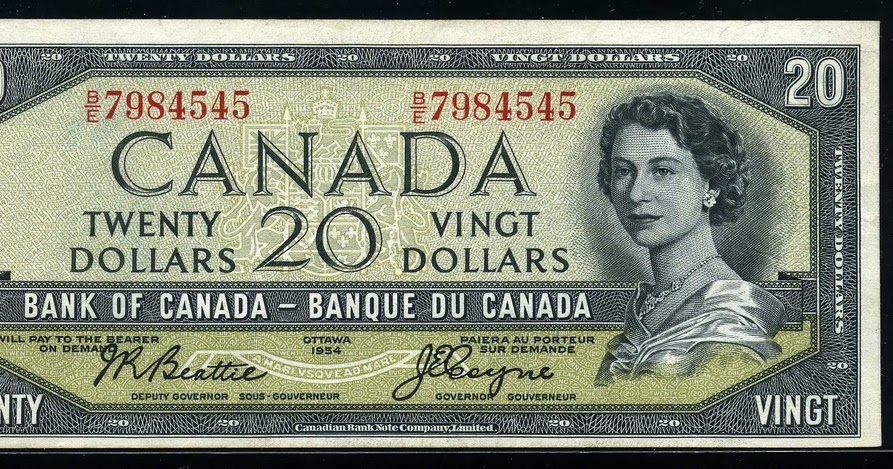Listed below are the most recent weights of the seven most common Canadian coins in grams: One cent (penny): 2.35 grams Five cents (nickel): 3.95 grams 10 cents (dime): 1.75 grams 20 cents: 4.65 grams 25 cents (quarter): 4.4 grams 50 cents (half dollar): 6.9 grams One dollar (loonie): 6.27 grams Two. The 1911 Canadian Silver Dollar is the Holy Grail of Canadian coins. For years it held the record for the world’s most valuable coin. Only 3 examples were ever struck (2 in silver and 1 in bronze). The bronze example and 1 silver example are housed at the Canadian Currency Museum in Ottawa, which leaves only 1 example out there for collectors! Coin value - $3-4. 1 dollar 1979 (1978-1987) nickel Diameter 32.1 mm. DOLLAR / CANADA / 1979 / Canoe travelers ELIZABETH II D G REGINA / Queen's head right KM#120 Coin value - $3-4. 1 dollar (loonie) 1989 (1987-1989) aureate-bronze plated nickel Diameter 26.5 mm. DOLLAR / CANADA / 1989 / loon right.

The official currency in Canada is the Canadian dollar, which is equivalent to 100 cents. The Canadian currency is renowned for its diverse and vibrant colors whose coins and bills feature a wide array of depictions with significant meaning. The Canadian coins have different shapes, colors and sizes. Many currencies in the country also have nicknames.
Who's on Canadian Money?
Nickel
The Canadian nickel is a five cent coin that is worth one twentieth of a Canadian dollar. As of February 4th, 2013 the Canadian Nickel became the smallest valued coin in the country's currency after the one cent penny was eliminated. The obverse side of the Canadian coin features the face of Queen Elizabeth II, while the reverse side features a beaver sitting on a rock representing the Algonkian heritage of the northeastern woodland. Historically, the five cents piece currency was introduced as a thin and little sterling silver coin in 1858. Initially, the five cent coin was not called the nickel, but a 'fish scale'. The larger version of the coin now known as the nickel was introduced in 1922 as a Canadian coin which was 99.9% nickel metal. From 1982 nickel prices went up and as a result Canadian nickels are now minted using nickel-plated steel making the original nickel a collector’s item.
Quarter
The Canadian quarter is a coin worth one-fourth or 25 cents of a Canadian dollar. A quarter is a small circular coin that is silver in color. The coin is manufactured at the Winnipeg's Royal Minting facility and is officially called the 25-cent piece. However, quarter is the name in practice. The obverse part of the coin features the side view image of Queen Elizabeth II, which represents the royal throne, whereas the reverse side features the image of a caribou depicting the herds of caribou found in Northern Canada.
Loonie

The loonie is a Canadian one dollar coin that is gold in color and was introduced in 1987. The outline of the coin features 11 sided angles whose thickness is 1.95 mm. The loonie has become the symbol for the Canadian dollar. The obverse side of the coin features an image of Queen Elizabeth II while the reverse side features the image of a common and popular bird in Canada, the Common Loon. The loonie was first introduced in the country in 1987 following the Canadian government's announcement of the replacement for the dollar bill the previous year.
One hundred dollar bill
The Canadian hundred-dollar bill is among the five banknotes of the Canadian currency. Since the Canadian 1000 dollar bill was slowly removed in circulation as of 2000, the Canadian 100 dollar bill has been the least-circulated and highest-valued banknote in the country. In November 2011 the current 100 dollar bill in Canada was circulated through the country's major banks. The obverse side of the bill features an image of Sir Robert Borden, who is the 8th Prime Minister of Canada, while the reverse side features an image of a medical innovation depicting the discovery of insulin for the treatment of diabetes and a DNA strand.
Other Canadian currencies
Canadian Currency Exchange Rate

Coins Of Canada
The different currencies in Canada both in coin form and banknote have different features, colors and images on the obverse and reverse side. The bank of Canada prints all the banknotes which are same in size but have different colors. The other types of currencies in the country include the dime, half a dollar, toonie, and five, ten, twenty and fifty dollar bills as well.